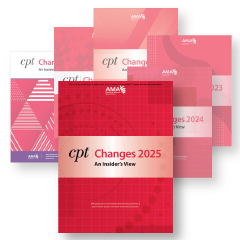by BC Advantage
Feb 1st, 2019
Physicians often use the term "attestation" to refer to any kind of statement they insert into a progress note for an encounter involving work by a resident, non-physician practitioner (NPP), or scribe. However, for compliance and documentation purposes, "attestation" has a specific meaning and there are distinct requirements for what a physician must "insert" into a progress note. A visit in which a resident participated in patient care has different rules than one in which a nurse practitioner was involved, while scribes require different attestation language altogether. For the purposes of this tip, we will examine teaching physician and split/shared visits, because the object of both is to allow the physician to bill for services that involved another provider (either a resident or NPP).
Recently, CMS (the Centers for Medicare & Medicaid Services) released updated guidance on its requirements for teaching physicians, which many may not be aware of. As we will see in this tip, the CMS changes actually simplify the requirements for teaching physicians. The only difficulty will be trying to find out if your commercial payers decide to follow CMS in simplifying their own rules.
What's an 'attestation'?
First, let's look at the term "attestation." For our purposes this is a statement by the physician that they are declaring something to be true about the progress note. In the context of a resident-involved service, the physician attestation is a statement that the teaching physician declares the progress note is in compliance with the applicable teaching physician rules. In the context of a visit in which a scribe is performing the documentation, the attestation is a statement that the scribe rules are being followed. Finally, under our definition of attestation, the term doesn't apply to a split/shared visit in which a physician and NPP both see the patient and "split" the visit. Instead, CMS rules state that each provider must contribute a "substantive portion" of the key components of the visit, and the combined documentation must reflect this.
What's required for a split/shared visit?
Second, let's dive a little deeper in the split/shared rules now that we understand CMS isn't looking for the physician to "attest," but rather that the physician contributed a "substantive portion" of the visit and documented this contribution. CMS contractors have often defined "substantive portion" as consisting of at least one of the three key components of an E/M visit (the history, physical exam, and medical decision making).
Split/shared visits are allowed by Medicare only in the inpatient setting and do not require that the physician and NPP see the patient together. Sometimes the NPP may see the patient and create a plan of care which the physician reviews later in the day, revising the plan as needed. It's important to understand that the physician can't satisfy the split/shared rules by inserting a generic "attestation." For example, if the physician inserts the sentence "I personally saw this patient and agree with existing plan," it's possible that a Medicare contractor would find that this sentence does not constitute a "substantive" contribution to the visit. Ideally, the physician should document any pertinent findings in the history or exam they personally perform, along with any changes to the plan of care they make. For example: "I personally saw this patient. Afebrile and cough better this AM but stridor still noted. Obtain chest X-ray, agree with remainder of plan ."
What's required for a teaching physician note?
The term attestation applies fully to a scenario where a teaching physician signs off on a resident's note and then bills for the visit personally - a necessity because residents are not credentialed for billing. However, CMS has long required the attestation to indicate the physician's personal presence during the performance of the key components of the visit, along with any changes the physician has for the resident's plan of care.
In its 2019 Medicare Physician Fee Schedule final rule, CMS states that it is finalizing a proposed provision that alters this requirement. The revised language now states that "the presence of the teaching physician during procedures and E/M services may be demonstrated by the notes in the medical records made by a physician, resident, nor nurse." Thus the physician attestation no longer needs to say "I was personally present with the resident for the key components of the visit."
The resident could include a statement such as "patient seen with attending Dr. Smith" and CMS would accept this as evidence of the physician's presence. However, while this does simplify the language required in an attestation, CMS isn't changing the requirement that the teaching physician must still sign off on the plan of care - either agreeing with the resident's plan or altering it.
The key point is that this "relaxing" of the rules applies to Medicare only. Unless your teaching physicians know for sure they're attesting on behalf of a Medicare patient, the longstanding rules still apply, as commercial payers may not be rushing to follow Medicare in making your life easier. Thus, for compliance purposes a full attestation is still preferred: "I personally saw the patient together with my resident, Dr. Doe, and have reviewed all available records and data. I have reviewed Dr. Doe's note for accuracy and agree with the plan of care."


 Quick, Current, Complete - www.findacode.com
Quick, Current, Complete - www.findacode.com